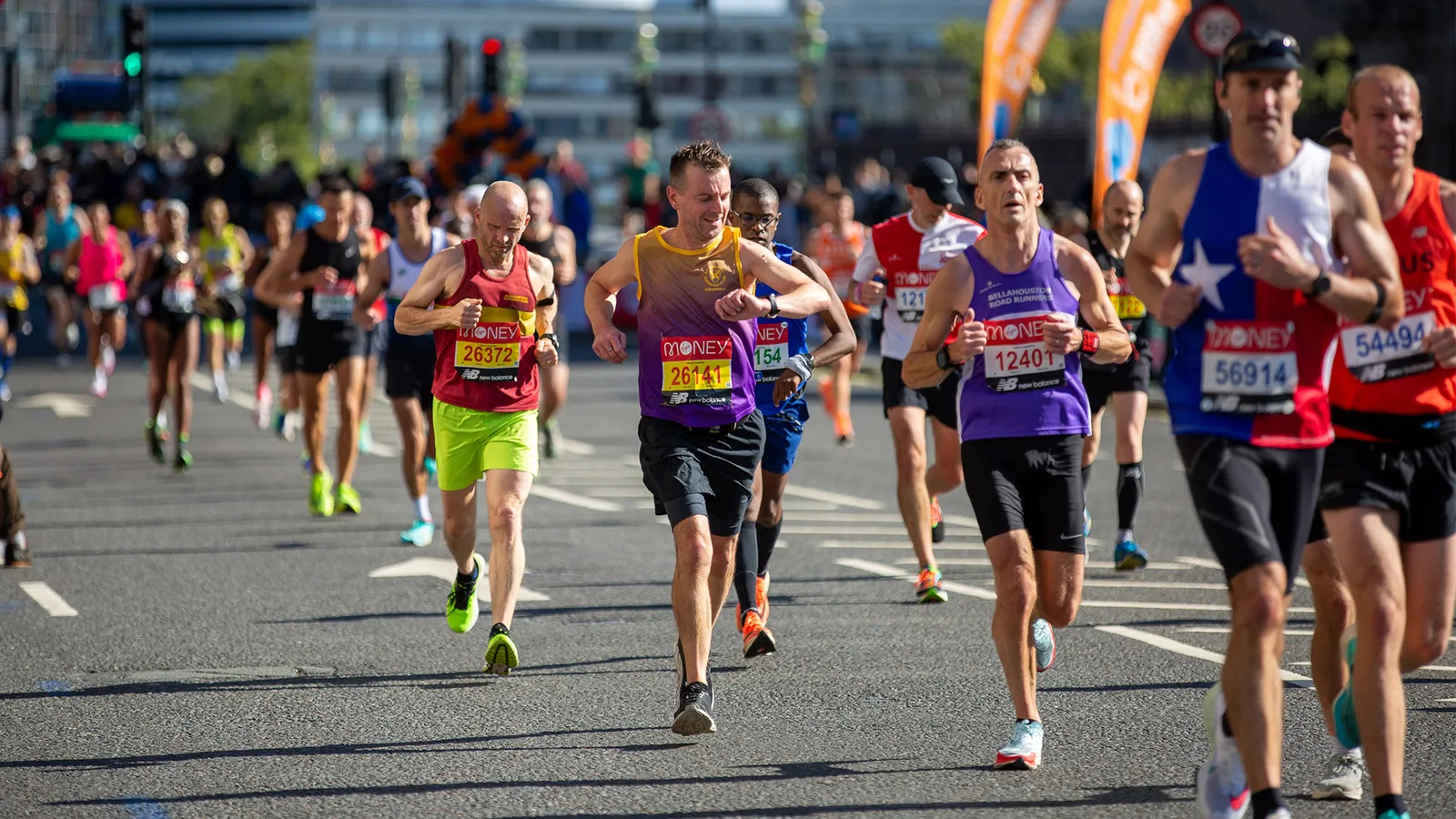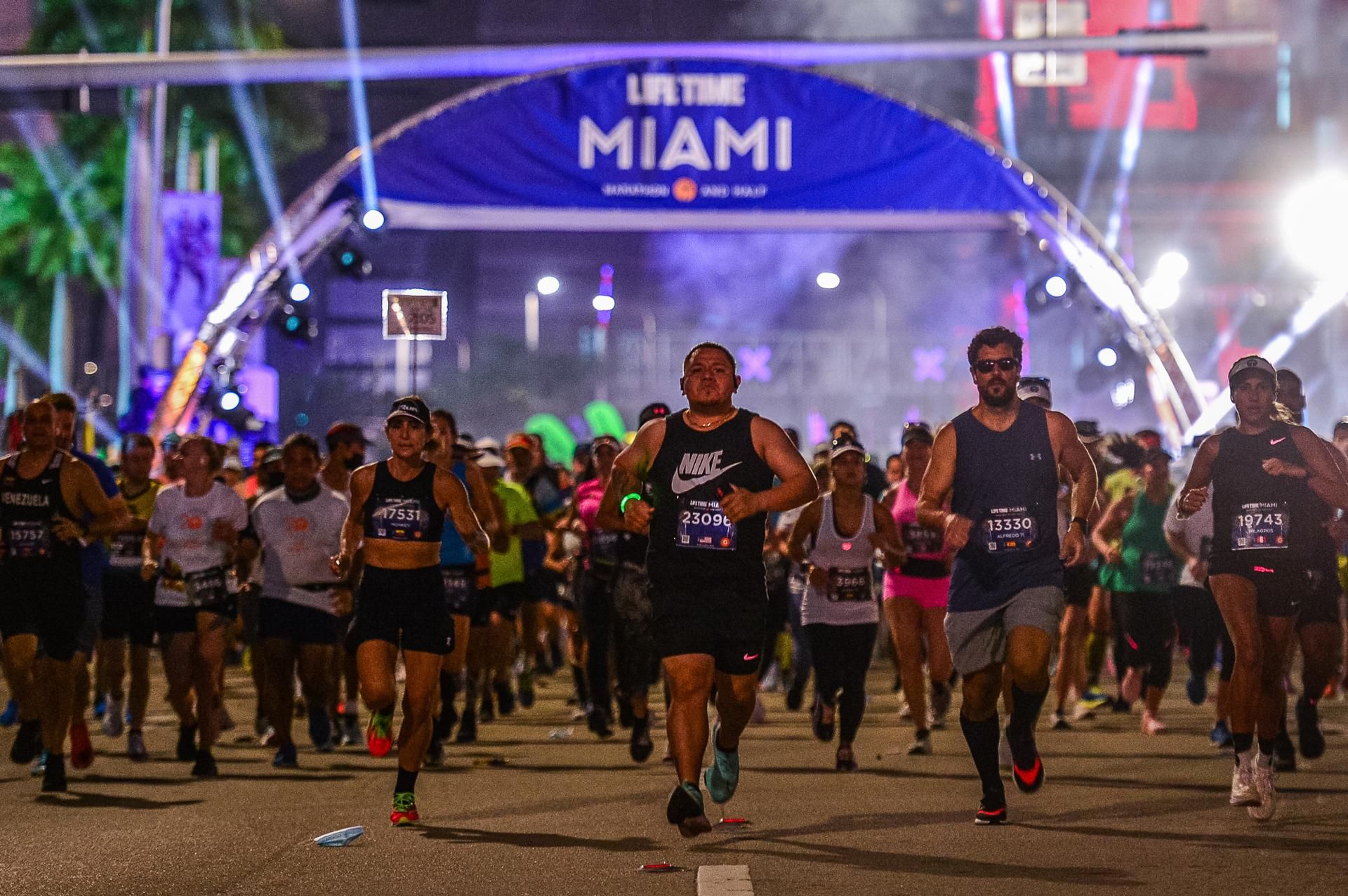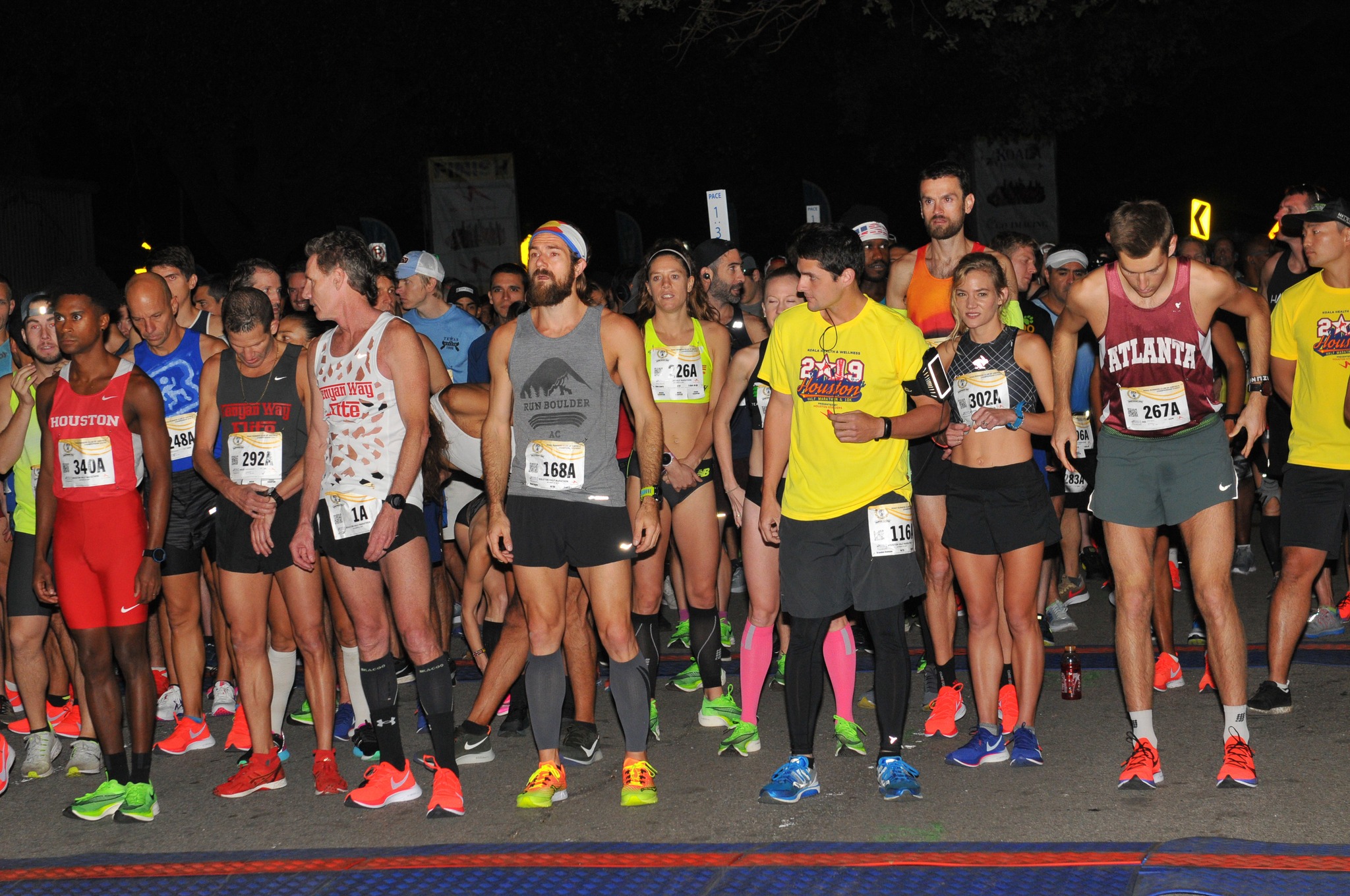

Featured
What Should My Marathon Pace Be
Modified: January 2, 2024
Find out how to determine your ideal marathon pace and set your goals with the help of our featured guide.
Introduction
Preparing for a marathon is an exciting endeavor that requires careful planning and dedicated training. One crucial aspect of marathon preparation is determining the appropriate pace to maintain during the race. Your marathon pace plays a significant role in both your training and race-day performance.
Running a marathon at the right pace is essential to ensure that you finish strong while avoiding burnout or injury. It is crucial to find a pace that allows you to maintain a steady rhythm throughout the entire race. This pace should be challenging but sustainable, enabling you to reach your goal time.
In this article, we will explore the factors to consider when determining your marathon pace. We will discuss how to assess your current fitness level, set realistic goal times, and calculate the pace that will enable you to achieve your objectives. Additionally, we will cover how to adjust your pace during the marathon itself to optimize your performance.
Whether you are a seasoned marathon runner looking to improve your time or a first-time participant aiming to complete the race, understanding how to establish an appropriate marathon pace is crucial. By applying the tips and strategies outlined in this article, you can confidently plan your training and approach to race day.
Factors to Consider
When determining your marathon pace, it’s essential to consider various factors that can influence your performance. Taking these factors into account will help you set a realistic and achievable pace for the race.
1. Fitness Level: Your current fitness level is a significant determinant of your marathon pace. Assess your endurance, speed, and overall fitness to gauge what pace you can comfortably maintain for the entire race.
2. Experience: Your experience as a runner plays a role in determining your marathon pace. If you’re a seasoned runner with previous marathon experience, you can draw on that knowledge to set a challenging yet realistic pace. If you’re a novice, it’s important to be conservative and prioritize finishing the race over achieving a specific time goal.
3. Terrain: The terrain of the marathon course can impact your pace. Consider whether the course is flat, hilly, or a mix of both. Adjust your pace accordingly, factoring in the additional effort required for uphill segments and the potential for faster speeds on downhill stretches.
4. Weather Conditions: The weather on race day can significantly impact your performance. Hot and humid conditions can make running more challenging, requiring you to adjust your pace to avoid overheating and dehydration. Similarly, strong wind or heavy rain may affect your pace, especially if you’re not accustomed to running in such conditions.
5. Goal Time: Set a realistic goal time for your marathon. Consider your previous race times, training progress, and overall fitness level. Your goal time will serve as a benchmark for determining the pace you need to maintain throughout the race.
6. Energy Management: Pace yourself effectively to manage your energy levels throughout the race. Starting too fast can lead to early fatigue, while starting too slow can affect your overall performance. Find a pace that allows you to stay in control while gradually increasing your effort as the race progresses.
7. Mental Preparation: Mental resilience and focus are vital for maintaining your marathon pace. Prepare yourself mentally to overcome challenges and stay determined to stick to your pace, especially during tough moments in the race.
By considering these factors, you can determine a marathon pace that suits your capabilities and sets you up for success on race day. However, it’s important to remember that everyone is unique, and what works for one runner may not work for another. Listen to your body, trust your training, and make adjustments as needed to ensure a comfortable and rewarding marathon experience.
Assessing Your Fitness Level
Before setting your marathon pace, it’s important to assess your current fitness level. Understanding where you are in terms of endurance, speed, and overall fitness will help you determine a realistic and achievable pace for the race.
1. Endurance: Assess your endurance by observing how long you can maintain a steady running pace without feeling excessively fatigued. Consider the longest distance you have run without significantly slowing down or needing to stop. This will give you an idea of your current endurance level.
2. Speed: Evaluate your speed by incorporating tempo runs and intervals into your training routine. Tempo runs involve running at a comfortably hard pace for a sustained period, while intervals consist of alternating between high-speed bursts and recovery periods. By tracking your times and perceived effort during these workouts, you can gauge your current speed capabilities.
3. Previous Race Performance: Reflect on your previous race performances, particularly longer distance races like half marathons or previous marathons. Analyze your finishing times and the pace you maintained during those events. This information can give you a benchmark to work from when setting your marathon pace.
4. Training Progress: Assess how your training has progressed leading up to the marathon. Have you consistently followed a training plan? Have you been able to increase your mileage over time? Monitoring your progress can help you understand how your fitness level has improved and guide you in setting an appropriate pace.
5. Listen to Your Body: Pay attention to how your body feels during training runs. Are you able to maintain a steady pace without feeling overly fatigued or experiencing discomfort? Do you feel capable of increasing your effort without compromising your form or risking injury? Listening to your body’s signals can provide valuable insights into your current fitness level.
By honestly assessing your fitness level, you can establish a baseline from which to set your marathon pace. Remember that it’s important to be realistic but also challenge yourself. Setting a pace that is too fast may lead to burnout or injury, while setting a pace that is too slow may leave you feeling unsatisfied with your performance. Strive to find a balance that pushes your limits while still providing a sustainable and enjoyable race experience.
Determining Your Goal Time
Setting a realistic goal time is an important step in determining your marathon pace. Your goal time should challenge you but also be attainable based on your current fitness level and training progress. Here are some effective strategies to help you determine your goal time:
1. Prior Experience: Consider your previous race performances, particularly your most recent half marathon or shorter distance races. Use these results as a starting point to estimate your marathon time. Keep in mind that longer races may require a slightly slower pace, so adjust accordingly.
2. Training Progress: Evaluate your training progress leading up to the marathon. Have you been consistent with your workouts and gradually increasing your mileage? Take into account any improvements in your speed and endurance during training, as these can indicate a faster goal time.
3. Time Trials: Conducting time trials during your training can give you a clearer understanding of your current pace. Choose a specific distance, such as 10 miles or a half marathon, and run it at a steady pace. Use the results to estimate your goal time by extrapolating the pace over the full marathon distance.
4. Age-Graded Tables: Age-graded tables can provide valuable insights into how your performance compares to others in your age group. Consult an age-graded table specific to your gender and age to estimate your marathon time. These tables consider factors such as gender, age, and race distance to provide a fair comparison.
5. Race Strategy: Consider the race strategy you intend to employ during the marathon. Are you planning to start slow and gradually increase your pace, or do you prefer a more even-pace approach? Your goal time should align with your race strategy to ensure a realistic and achievable performance.
Remember that your goal time is personal and should reflect your individual abilities and aspirations. Be honest with yourself and set a goal time that challenges you but is still within reach. It’s better to set a realistic goal and surpass it than to set an unattainable goal and feel discouraged if you fall short.
Once you have determined your goal time, you can begin to calculate your marathon pace and structure your training accordingly. A well-defined goal time ensures that your training is focused and tailored to help you achieve the desired outcome on race day.
Calculating Your Marathon Pace
Calculating your marathon pace is a crucial step in preparing for the race. Your marathon pace is the speed at which you will run to achieve your goal time. By determining this pace, you can structure your training and develop a solid race strategy. Here’s how you can calculate your marathon pace:
1. Use a Pace Calculator: Online pace calculators are great tools that can help you determine your marathon pace. Enter your goal time or finishing time, and the calculator will provide you with the pace per mile or kilometer that you need to maintain. This calculated pace will form the basis for your training and race strategy.
2. Run a Time Trial: Another way to calculate your marathon pace is by running a time trial. Choose a distance, such as 10 kilometers or a half marathon, and run it at a steady pace. Use the total time taken to complete the distance and divide it by the distance to determine your average pace per mile or kilometer.
3. Factor in Race Conditions: Consider the conditions of the specific marathon you will be running. If the course is hilly, you may need to adjust your pace accordingly. Take into account any potential challenges the race may pose and adjust your pace to accommodate these factors.
4. Pace Zones: Some runners prefer to train using pace zones rather than a specific pace per mile or kilometer. Pace zones are broad ranges of effort that guide your training intensity. For example, Zone 1 may represent an easy recovery pace, while Zone 5 may represent a maximum effort pace. By training within specific pace zones, you can improve your overall fitness and gauge your effort level during the marathon.
5. Listen to Your Body: While calculations and pace calculators can provide guidance, it’s essential to listen to your body during training and adjust your pace as needed. If you feel that the calculated pace is too challenging or not challenging enough, make adjustments accordingly.
Once you have calculated your marathon pace, you can incorporate it into your training plan. Ensure that your long runs, tempo runs, and interval sessions are structured around this pace to help your body acclimate to the specific demands of running at that speed for an extended period.
Remember that your marathon pace should be a challenging but sustainable speed that will enable you to reach your goal time. By calculating and training at your marathon pace, you will increase your chances of performing at your best on race day.
Training Based on Your Marathon Pace
Training based on your marathon pace is crucial for improving your fitness, building endurance, and preparing your body for the demands of the race. By incorporating specific workouts and adjusting your training intensity, you can optimize your performance and increase your chances of achieving your goal time. Here’s how to train effectively based on your marathon pace:
1. Long Runs: Long runs are the cornerstone of marathon training. Gradually increase the distance of your long runs, aiming to complete at least one run close to the full marathon distance. Run these long runs at or slightly slower than your marathon pace to condition your body to sustain the effort over an extended period.
2. Tempo Runs: Tempo runs help improve your lactate threshold and your ability to maintain a faster pace for a prolonged period. Incorporate tempo runs into your training schedule, running at a comfortably hard pace slightly faster than your marathon pace. These runs should challenge your aerobic capacity and teach your body to sustain a steady pace.
3. Interval Training: Interval training involves alternating between periods of high-intensity running and recovery. By incorporating intervals into your training, you can improve your running speed and efficiency. Perform intervals at a pace faster than your marathon pace, followed by a recovery period. This type of training helps develop your anaerobic capacity and overall speed.
4. Easy Runs: In addition to your key workouts, include easy runs in your training regimen. These runs should be at a comfortable, conversational pace that allows for active recovery and helps build endurance without adding excessive stress on your body.
5. Race-Specific Workouts: As your race day approaches, incorporate race-specific workouts into your training. These workouts simulate the race conditions and help you fine-tune your pacing. Run a portion of your long runs or do specific interval workouts at your goal marathon pace to practice maintaining that pace under fatigue.
6. Rest and Recovery: Allow yourself ample rest and recovery throughout your training. Your body needs time to adapt and repair itself after challenging workouts. Incorporate rest days and easy recovery runs into your training schedule to prevent overtraining and reduce the risk of injury.
Remember that training based on your marathon pace is a gradual process. Be patient and allow time for your body to adapt and improve. Listen to your body’s cues and make adjustments to your training plan as needed.
By structuring your training around your marathon pace, you will develop the fitness, endurance, and mental stamina necessary for a successful race. Consistent and purposeful training will prepare you to confidently tackle the marathon distance at the pace required to achieve your goal time.
Adjusting Your Pace During the Marathon
During a marathon, it’s essential to be flexible and make adjustments to your pace as needed. Factors such as weather conditions, race terrain, and your own physical state can all impact your running performance. By being aware of these factors and making strategic pace adjustments, you can optimize your marathon experience. Here’s how to adjust your pace during the race:
1. Start Conservatively: Begin the race at a slightly slower pace than your goal marathon pace. This conservativeness allows you to find your rhythm, warm up gradually, and avoid burning out early in the race.
2. Monitor Your Pace: Pay close attention to your pace throughout the race. Consider using a GPS watch or a running app to keep track of your current pace. Regularly glance at your pace to ensure you’re staying on target and maintain a consistent effort.
3. Adjust for Race Conditions: Adapt your pace based on the race conditions. If it’s particularly hot or humid, you may need to slow down and conserve energy to avoid overheating. If the weather is favorable or the course is mostly downhill, you might be able to pick up the pace slightly.
4. Assess Your Energy Levels: Listen to your body’s signals and adjust your pace accordingly. If you’re feeling strong and energetic, you may be able to push the pace a bit. Conversely, if you’re feeling fatigued or encountering muscle cramps, it may be beneficial to slow down slightly to avoid hitting the proverbial “wall.”
5. Utilize Aid Stations: Take advantage of aid stations strategically. Slow down slightly when approaching aid stations to properly hydrate and refuel. This brief slowdown can help maintain a consistent overall pace without compromising your energy levels.
6. Mental Focus: Use mental strategies to stay focused and motivated during the race. Break the course into smaller, manageable segments, and set pace targets for each segment. By focusing on shorter intervals, you can maintain a steady pace and make it feel more achievable.
7. Finish Strong: As you approach the final miles of the marathon, assess your energy reserves and adjust your pace accordingly. If you have enough left in the tank, you can increase your pace and finish strong. However, if you’re feeling exhausted, maintain your current pace to ensure you reach the finish line comfortably.
Remember, the ability to adjust your pace during a marathon is a skill that comes with experience. Practice during your training runs to become comfortable with adjusting your effort level as needed. Trust your training, listen to your body, and make thoughtful adjustments to ensure a strong and successful marathon performance.
Conclusion
Setting and maintaining an appropriate marathon pace is crucial for a successful race. By considering factors such as fitness level, experience, terrain, weather conditions, and goal time, you can determine the pace that is both challenging and sustainable for you. Assess your fitness level and set a realistic goal time to guide your training and race strategy.
Calculating your marathon pace using online pace calculators or time trials provides a benchmark for your training intensity. Tailor your training plan to include long runs, tempo runs, interval training, and easy runs that align with your marathon pace. This structured approach helps improve endurance, speed, and overall fitness, preparing your body for the demands of the race.
During the marathon, be prepared to adjust your pace as necessary. Start conservatively, monitor changes in race conditions, and listen to your body’s signals. Make pace adjustments to optimize your performance and energy levels. Utilize aid stations strategically and maintain mental focus to stay motivated throughout the race.
Training based on your marathon pace and making calculated adjustments during the race will increase your chances of achieving your goal time. Remember that each runner is unique, and it may take time to find the ideal pace and race strategy that works for you. Practice, patience, and perseverance will help you reach your full potential as a marathon runner.
As you embark on your marathon journey, embrace the challenge, enjoy the process, and savor the accomplishment of crossing the finish line. With proper pacing and training, you’ll be well on your way to achieving your marathon goals and creating lifelong memories along the way.









